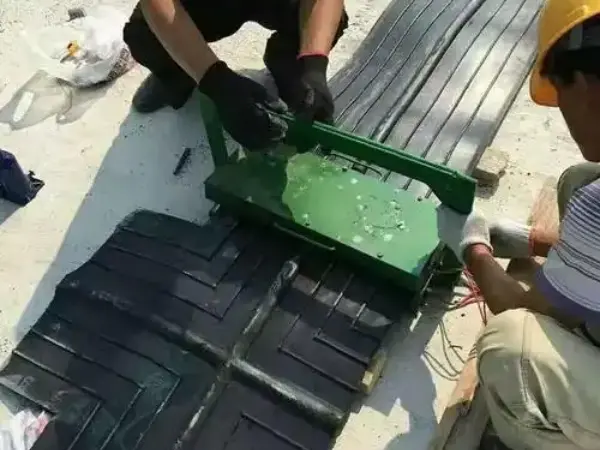 The joint methods for rubber waterstops mainly include cold bonding and hot melt welding.
The joint methods for rubber waterstops mainly include cold bonding and hot melt welding.
- Cold bonding method: This method uses rubber waterstop special adhesive for connection. Firstly, use a polishing machine to smooth out the section that needs to be joined by 5 to 10 centimeters. Then, apply a thin layer of adhesive specifically for waterstops, let it dry, and apply another layer. Finally, place the two joints in the designated position for bonding and pressure, and wait for about 30 minutes to complete the connection. The advantages of cold bonding method are convenient construction, time-saving and labor-saving, and suitable for general engineering quality requirements.
- Hot melt welding method: This method uses a hot melt welding machine for on-site welding. Firstly, align the two rubber waterstop joints and reserve a 3-5mm joint. Fill the joint with hot mix film, then wrap the joint with green tape and compact it. Place the connection joint on the hot melt welding host, heat for 10 minutes±5minutes, and cool to room temperature to complete the connection. Hot melt welding method is suitable for projects with strict requirements for engineering quality. Although the construction difficulty is high, the joint effect is ideal.
During the construction process, it is important to pay attention to the following points:
First, clean the surface of the rubber waterstop and keep it dry and free of impurities;
Secondly, when applying specialized adhesive, a thin layer should be applied to avoid excessive thickness;
Finally, during bonding, press down for 20-30 minutes to ensure a firm bond. In addition, the joint of the rubber waterstop should avoid areas with small drainage slopes and easy accumulation of water behind the wall as much as possible to ensure waterproofing effect.
 Hengshui Aohong Engineering Materials Co., Ltd.
Hengshui Aohong Engineering Materials Co., Ltd.

Scan the QR Code to start a WhatsApp chat with us.